“EQ” or “emotional quotient” - also referred to as emotional intelligence - is the ability to recognize, understand and manage your own emotions, AND to recognize, understand and influence the emotions of others. Research suggests that EQ may, in fact, be TWICE as important to business success as general intelligence, or IQ. This unit focuses on tools you can incorporate immediately to access your own emotional intelligence and keep practicing.
If you become fluent in EQ, then you can use all the tools to be a better leader, build better teams and companies, and have a positive impact on those around you. In this section, we recommend daily journaling to support your EQ practice, with different journaling prompts to support and deepen each skill area.
What is motivating you today to build your emotional intelligence? What’s at stake here? Write your answer below.
The foundation of all emotional intelligence is self-awareness - conscious knowledge of your own strengths, weaknesses, values, and triggers. The more self-aware you are, the better you are able to observe yourself and others as if from a distance and use that vantage point to make more skillful decisions in your relationships.
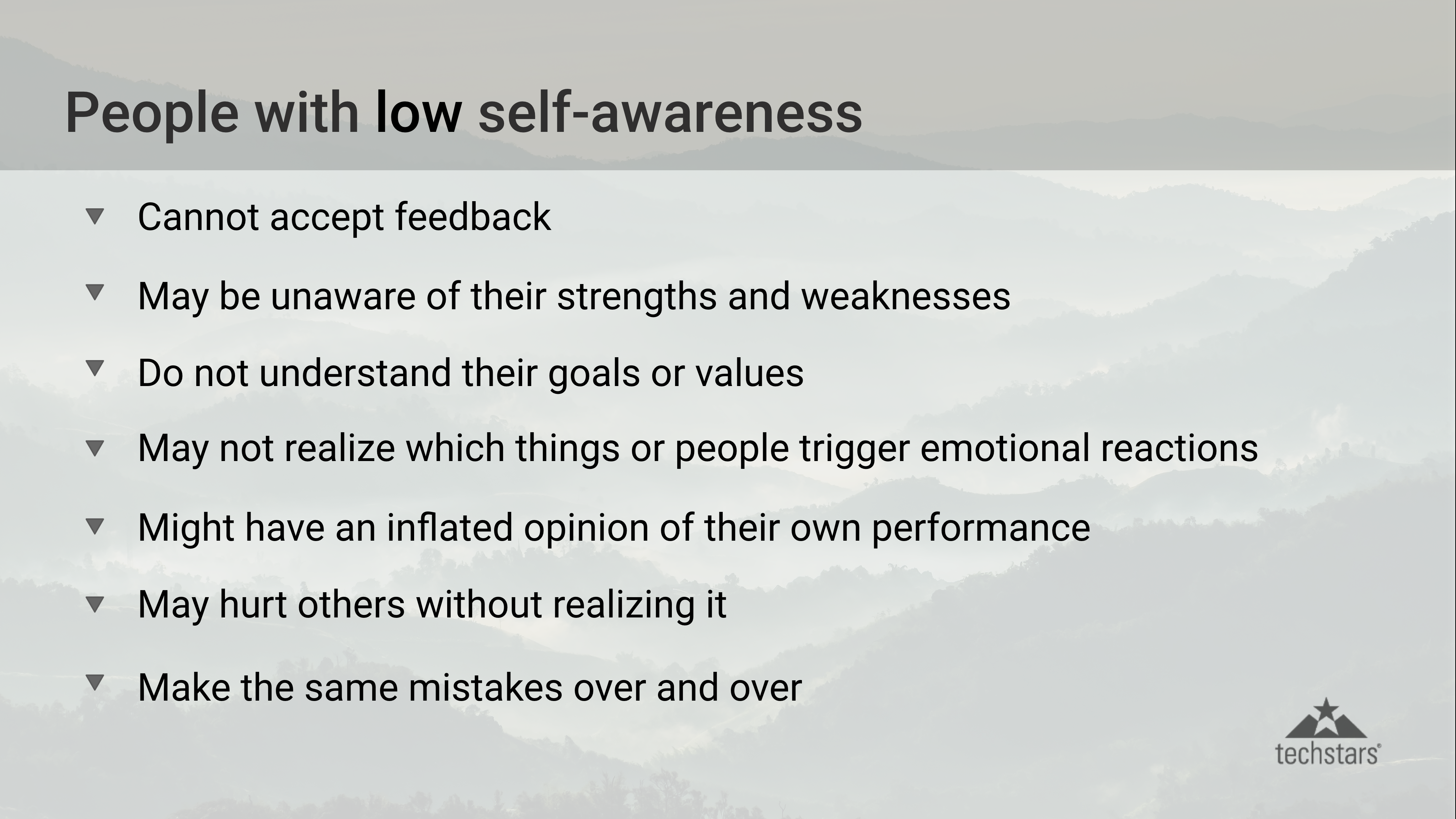
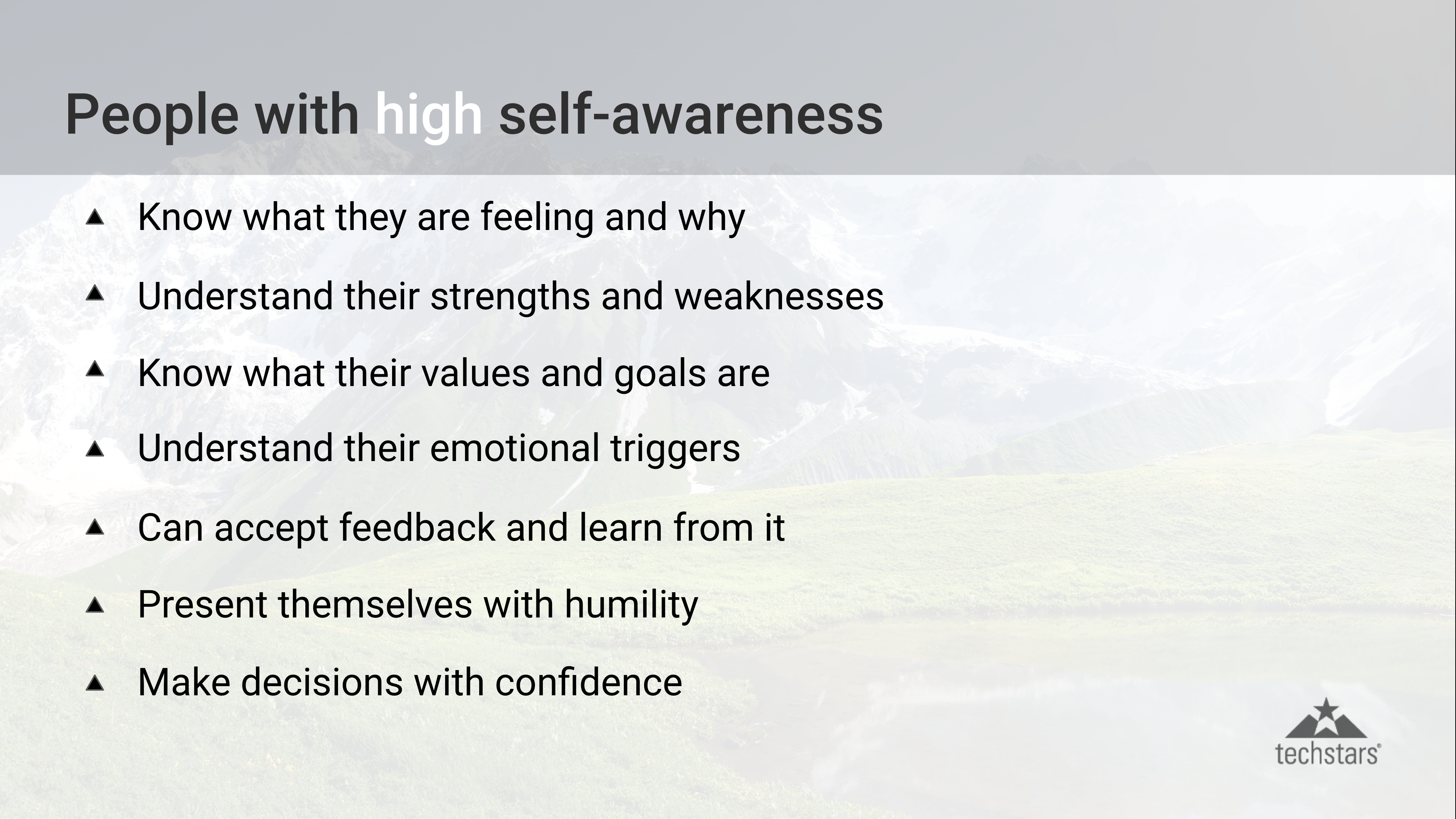
To start building your self-awareness let's start with a baseline. Write down 5 of each below:
|
Strengths
|
|
|
Growth Opportunities
|
|
|
Core Values
|
|
|
Triggers
|
This is a group exercise designed to improve self-awareness and how others see you. Named for the two psychologists who created it in 1955 - Joseph Luft and Harrington Ingham - the Johari window is a simple exercise that requires a list of adjectives, a group of people who know each other (like a founding team or work team) and some blank paper.
Supplies: Blank sheets of paper, pen
Participants: Founding Team or Work Team
INSTRUCTIONS
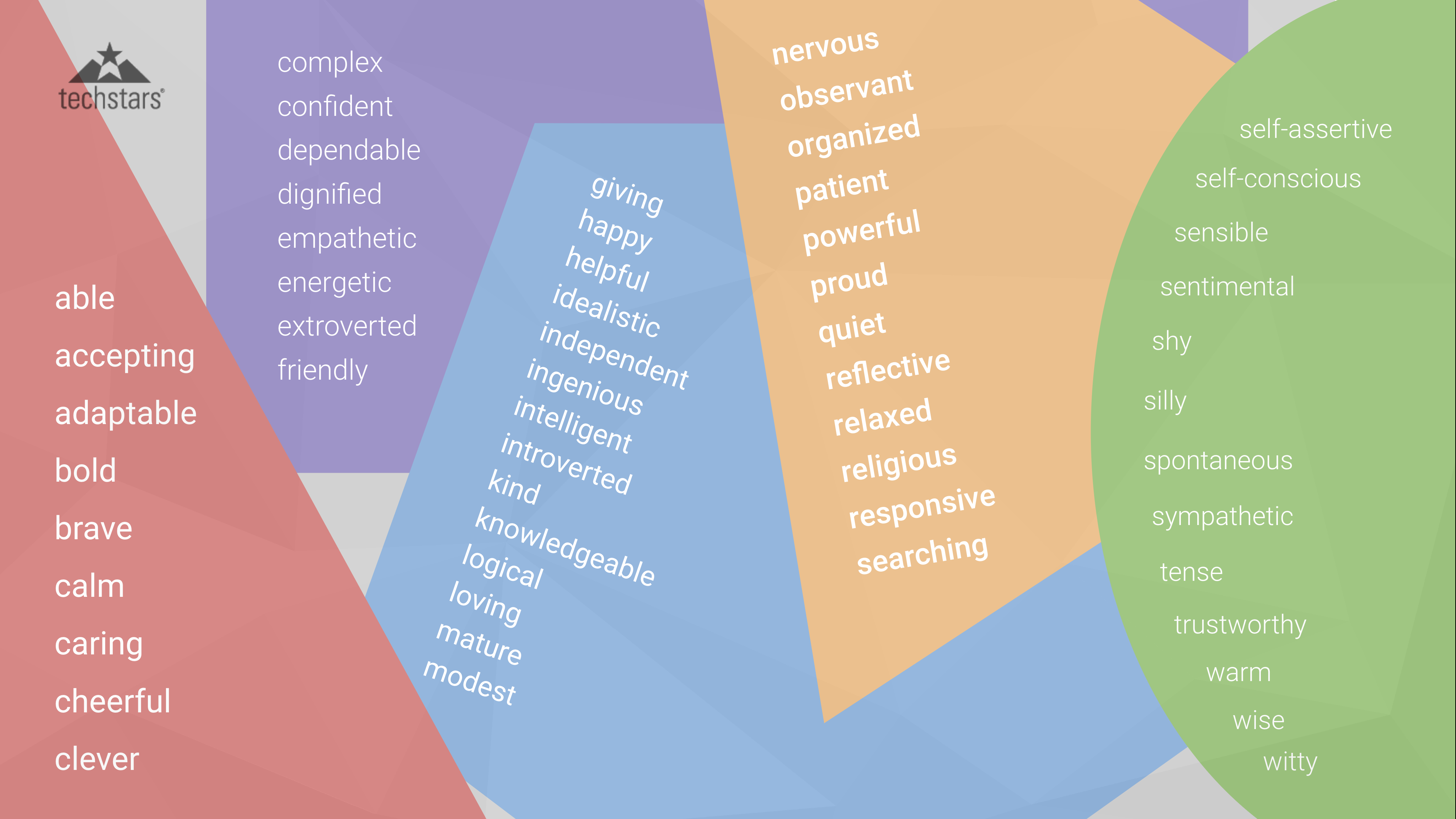
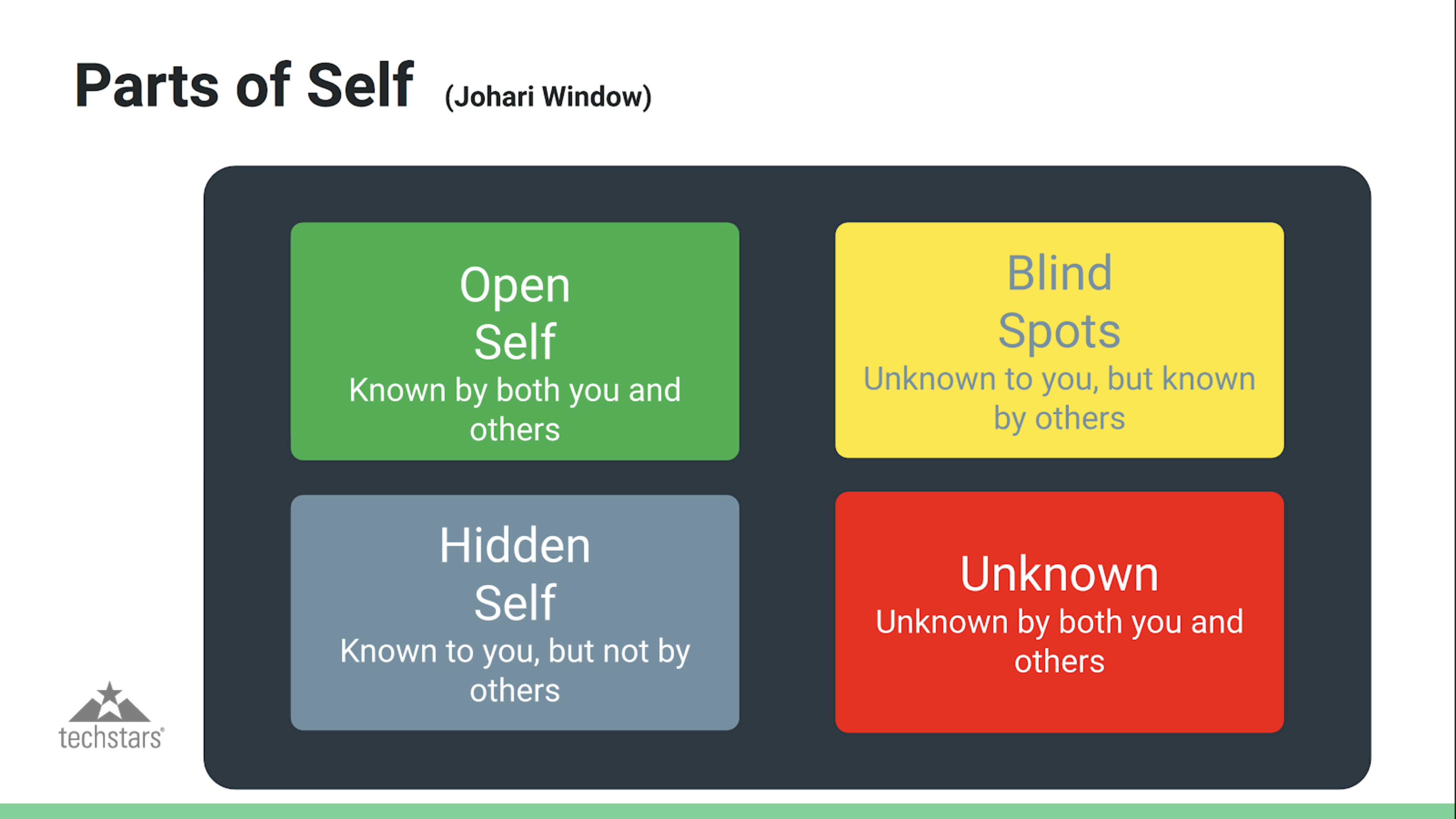
What do you notice about your Johari Window? Are there a lot of adjectives in the “OPEN” box or a lot in the “BLIND SPOT” box? Write your answers below.
What surprises you about others’ answers about you? Write your answers below.
It’s a great idea to follow up with the group if you notice something that really surprises you - so you can learn more about what they are seeing in you that you don’t see.
Comparing boxes with other people on your team can also lead to interesting conversations.
How are you the same and how are you different?
Now that you have your baseline self-assessment and some input from your team, you can your practice with short daily journal entries. Spend a week writing a list at the end of each day:
If you build this short exercise into your daily routine, EQ can become one of your superpowers. Combine that with a daily meditation practice for even better results.
A commitment to a regular mindfulness practice has a transformative effect on you and your team. Practicing mindfulness so that you can be more fully present allows you to listen and take in more of what’s happening around you, improves your problem solving and creative thinking abilities, and has a positive impact on everyone around you.
Meditation - even a short 5-minute meditation every morning - is one road to greater mindfulness. Here are two other exercises - one you can do on your own and one group check-in that will bring everyone in the room together before a meeting or group discussion. “Feet on the floor” is a great solo exercise before you have to speak in public or have a stressful conversation; “Red, Yellow, Green” is a great way to start a daily or weekly team meeting.
Feet on the Floor mindfulness exercise
You can do this exercise as you enter a conference room for a meeting or as you sit down at your desk to work. You can even do it with your eyes open to ground yourself, without anyone else in the room, just be aware of what you are doing. It can take 1 minute or 5 minutes, depending on the time available.
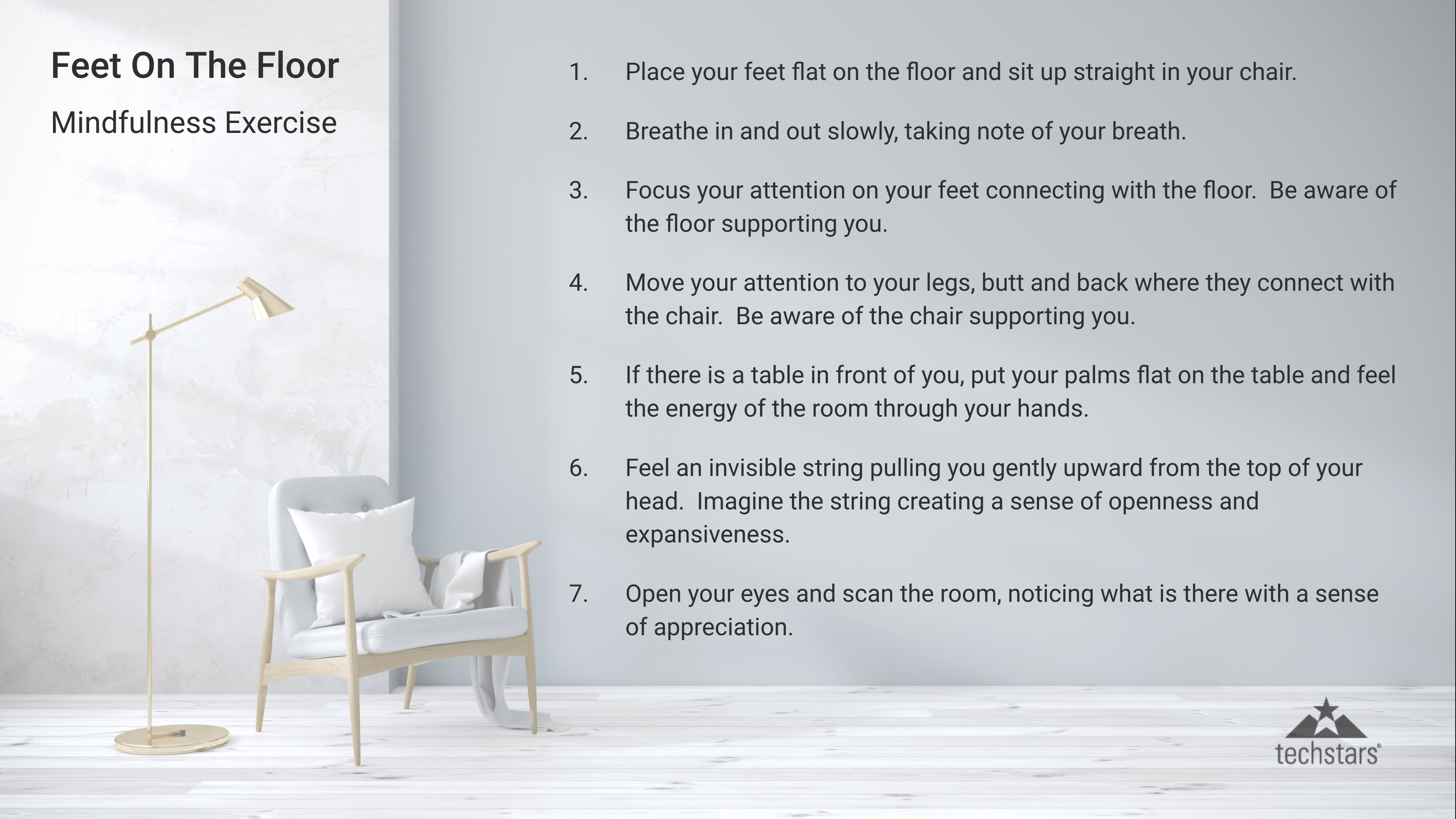
NOW START YOUR MEETING!
Before beginning your next team meeting, begin by going around the room answering the simple question, “how are you?” Answer in the form of “Red, yellow or green” with an optional explanation. You can be green in your personal life and yellow at work, which is an important distinction.

Green means you feel “in the flow”, all systems are working. Nothing is distracting you or causing anxiety.
Yellow is reactionary, meaning something is not quite right; you may be anxious or distracted.
Red means your rational brain is offline and your nervous system has shut down; things just are not working physically or emotionally. You may be dealing with a crisis at home or work or with a physical challenge - injury or illness.
There are several huge benefits to doing this exercise with your team.
Make a commitment to a mindfulness practice today! What is the commitment that you are making? Write your answers below.
How will you create accountability, so that you can follow through on this commitment to yourself and your team? Write your answers below.
Practice meditation or another mindfulness exercise for a week and note in your journal how you are feeling at the end of each day. Do you have more energy? Are you able to manage stress better and slow down your reaction time? Are you having more productive meetings? Is it hard to keep the commitment? What else do you notice?
Fear can affect the quality of your decisions and your ability to function effectively. The first step in managing fear is just identifying when it happens and what the trigger is. In a Harvard Business Review Study there were seven identified fears of entrepreneurs:
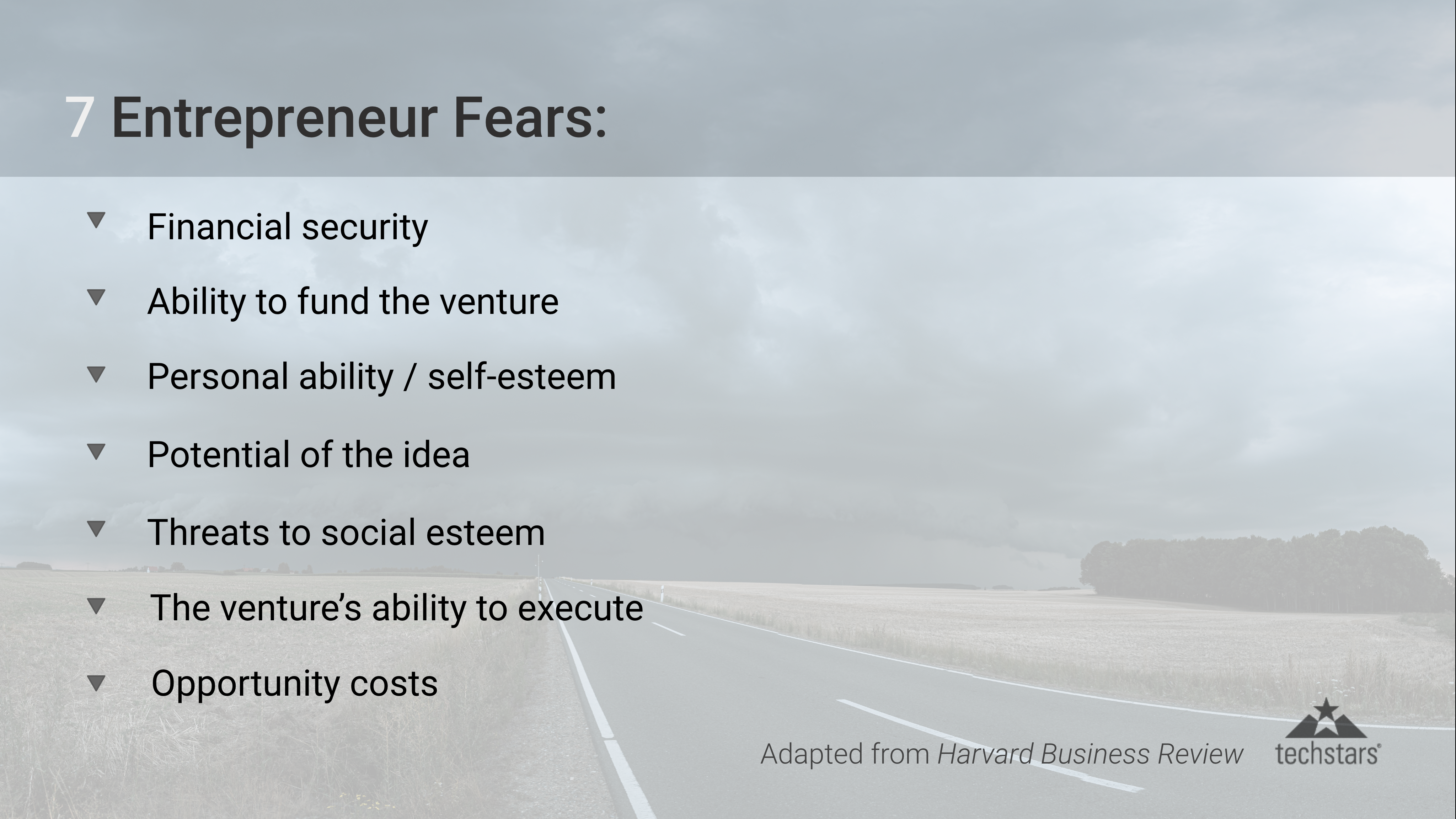
What are your big fear triggers? What is the thing you are most worried about? Write your answers below.
How does fear affect you? Observe yourself in fear. What is your physical state? How does your behavior change? Write your answers below.
What is your action plan if you notice yourself getting into this state? Write your answers below.
Track in your daily journal when you notice fear cropping up and how you respond. Make sure to note if the triggers you experienced are originally what you thought they were, how you reacted and the action plan for working through it.
Powerful questions are an essential tool for flexible thinking. Powerful questions:
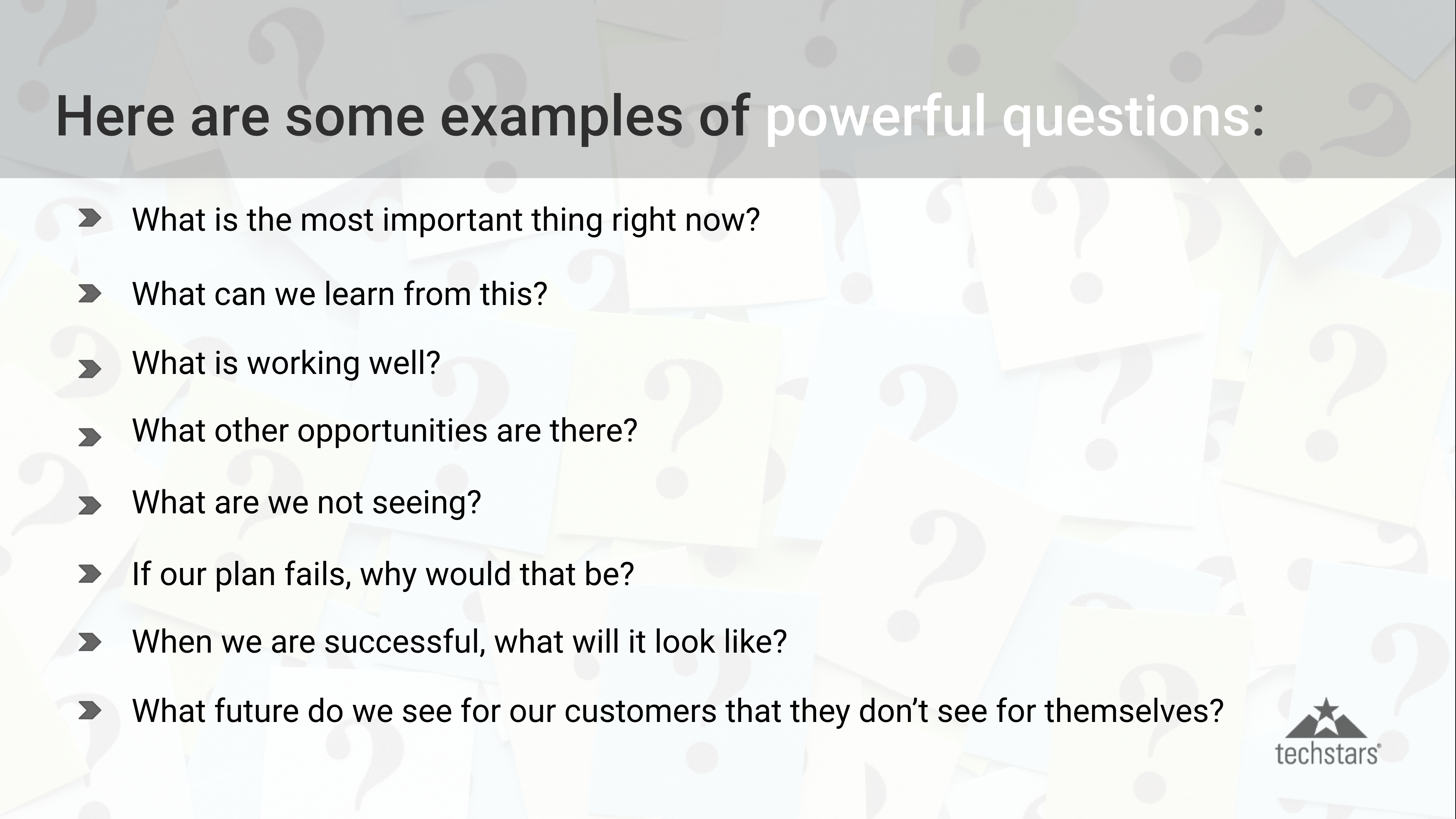
Spend time with your team brainstorming powerful questions that you could ask about your business. List some powerful questions here to get you started:
Track powerful questions that you use in your day. What questions generated the best discussion? What questions are your go-to powerful questions? Are there other questions you asked today that shut a discussion down rather than opening it up? What question did someone else ask that you’d like to remember?
Getting really good at giving AND receiving feedback is a core attribute of a strong leader.
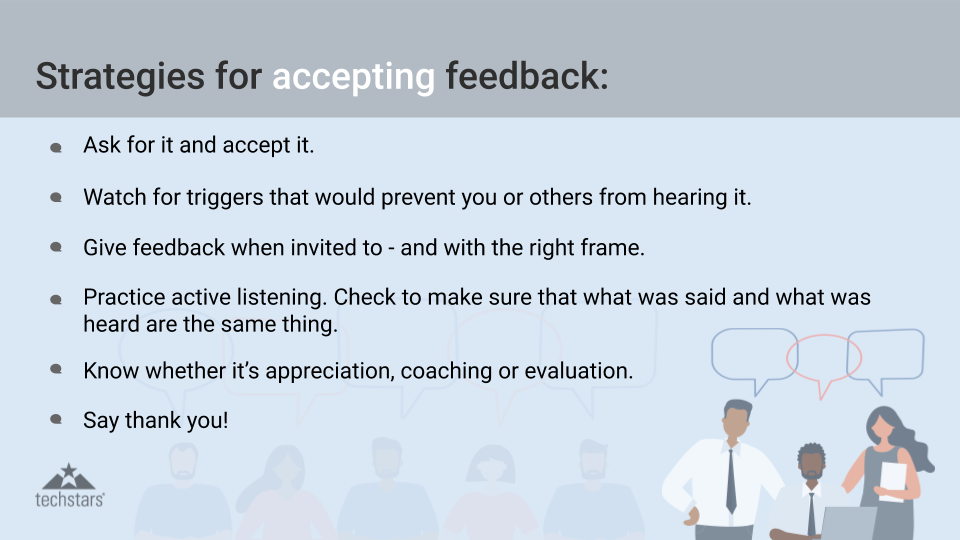
How do you react when you get feedback? What small changes can you make so that you can get better at hearing the feedback? Where are you resistant to feedback?
In building your coaching skill set, complete this exercise with a colleague or someone on your team at work. You can take turns being the coach and the coachee so you both can practice.
The objective here is to practice the coaching skill, so at the end, give feedback to your coaching partner about how their questions and presence came through for you.
Coachee: Think of an issue you have been struggling with or an area you’d like to improve. Something you are comfortable sharing in a work setting. The purpose of this exercise is not to work on your issue (although you might get some benefit) but to give the other person practice and feedback. Pay attention during the exercise to how the other person’s reactions, stance, and questions are having an impact on you so you can give them feedback afterward.
Coach: Lead the session using thoughtful and helpful questions (see suggestions below), ask follow up questions, and share observations and dig deeper.
Remember to stay curious, don't offer a solution, and let the coachee drive the direction. These seven questions are derived from The Coaching Habit by Michael Bungay Stanier.
When you have both had a turn, hold a feedback session on how the coaching went. Identify if your partner was trying to “fix” the problem or were they reflecting and asking questions.
Observe when you’ve had a positive impact on someone else during your day. What question did you ask them or what did you do that was useful? Notice whether your greatest value to your team comes when you “fix tell solve” or when you “ask listen reflect”. How does it feel to behave in each of those modes?
Note: some may require additional fees.
Download this EQ Journaling Exercise Worksheet
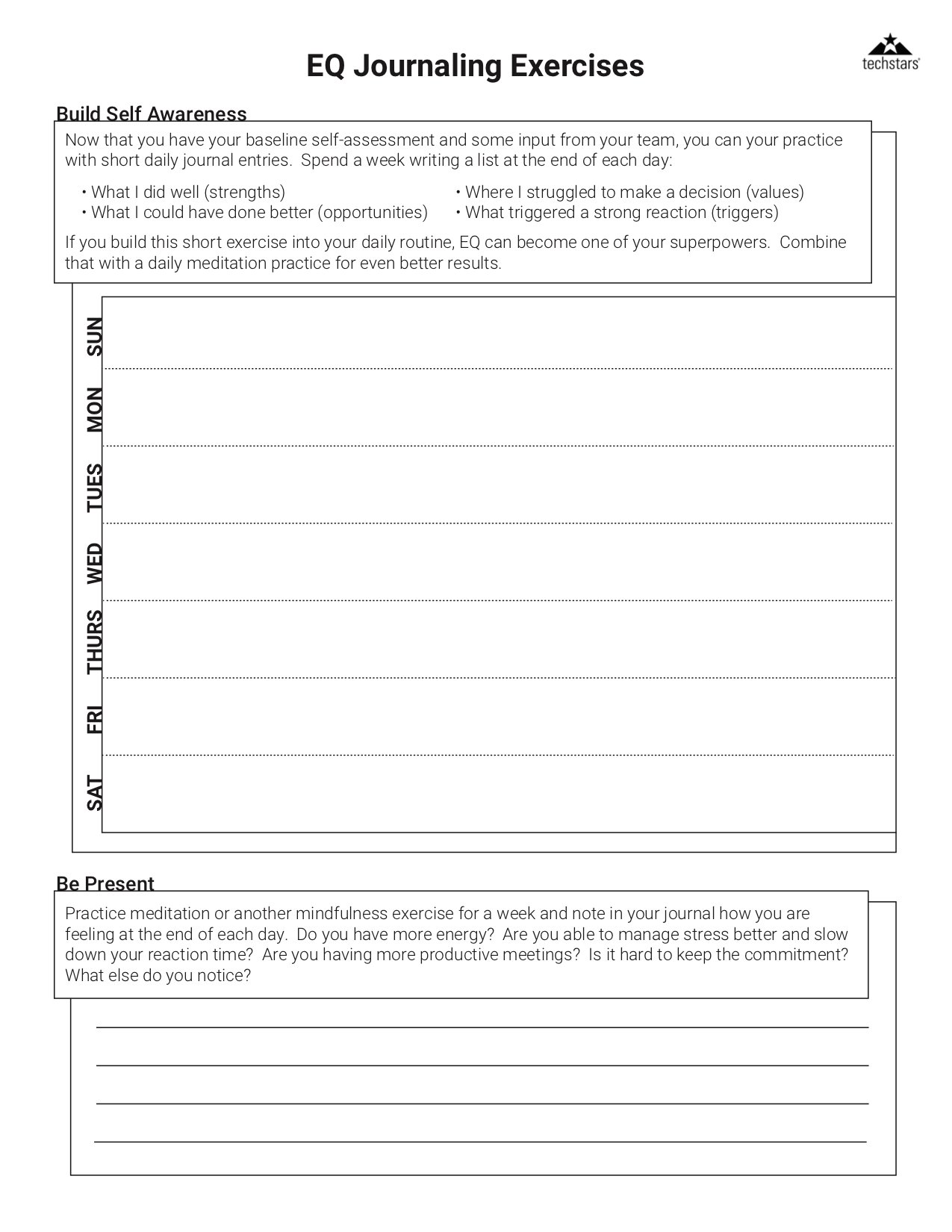
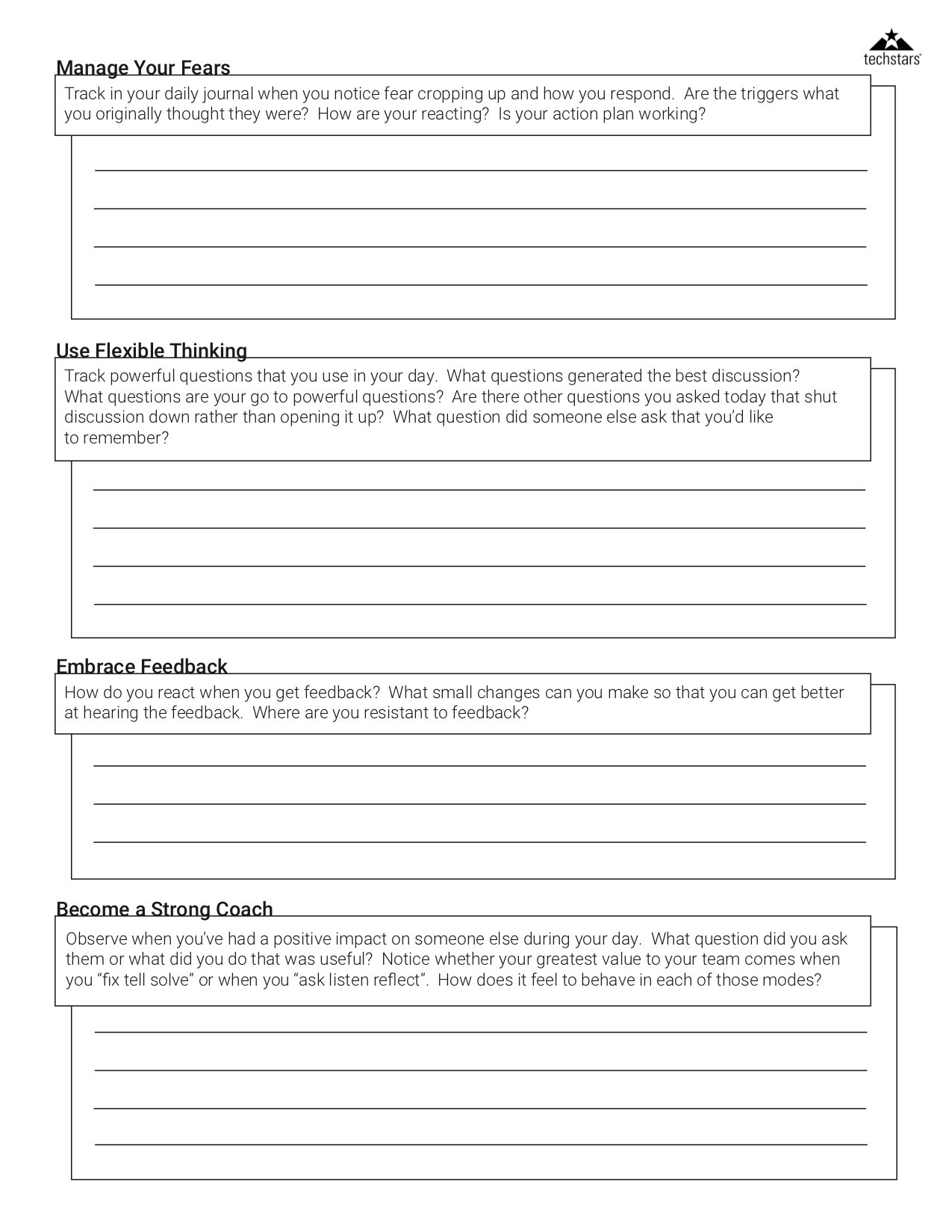
© Techstars 2024 | Privacy Policy | Terms of Use